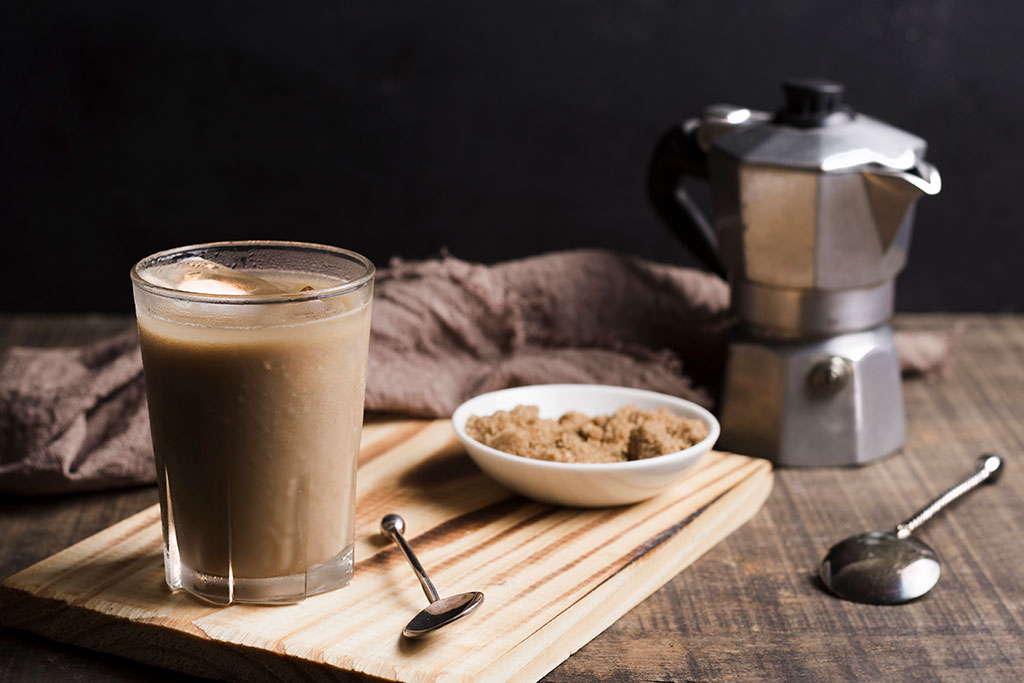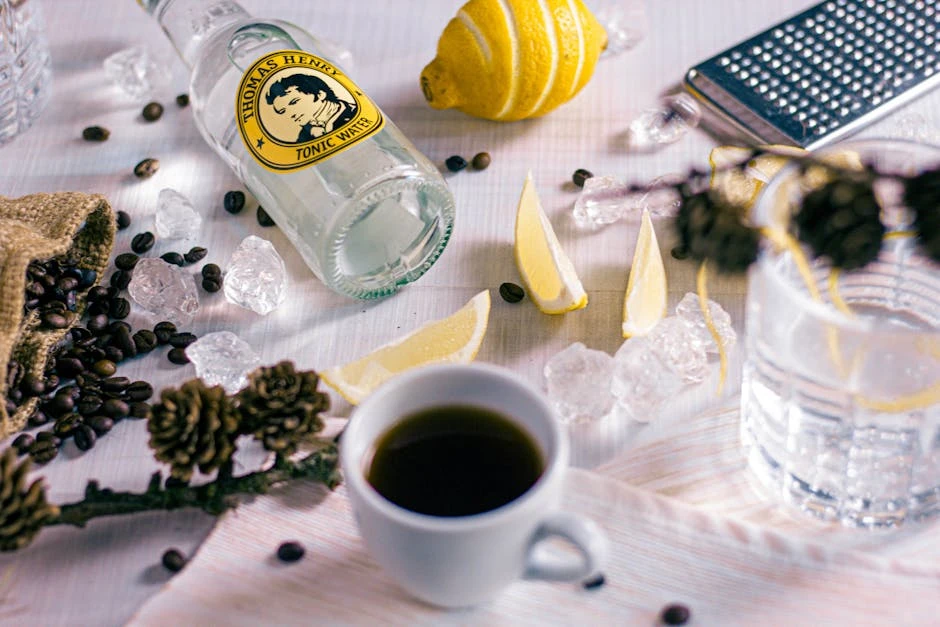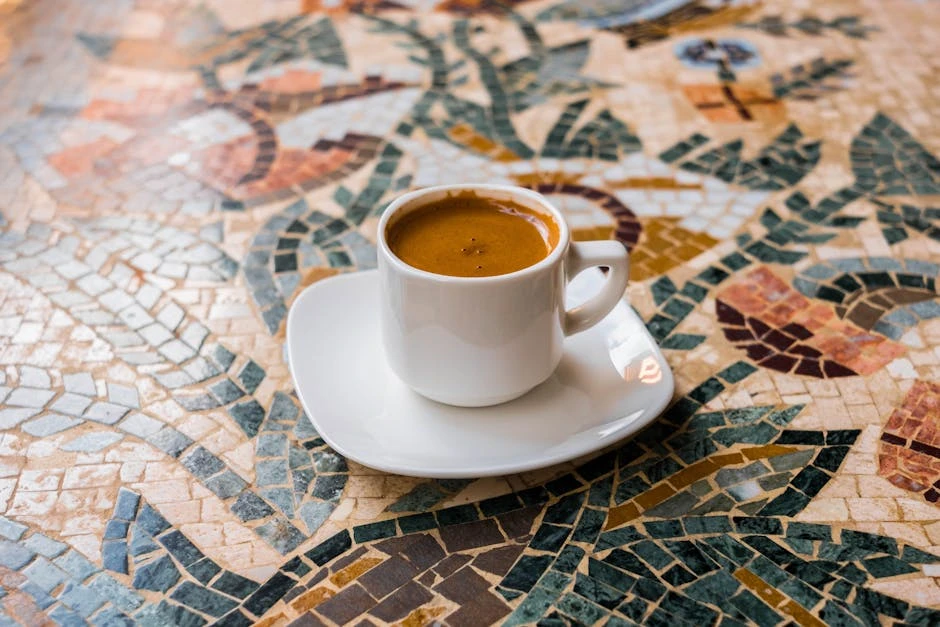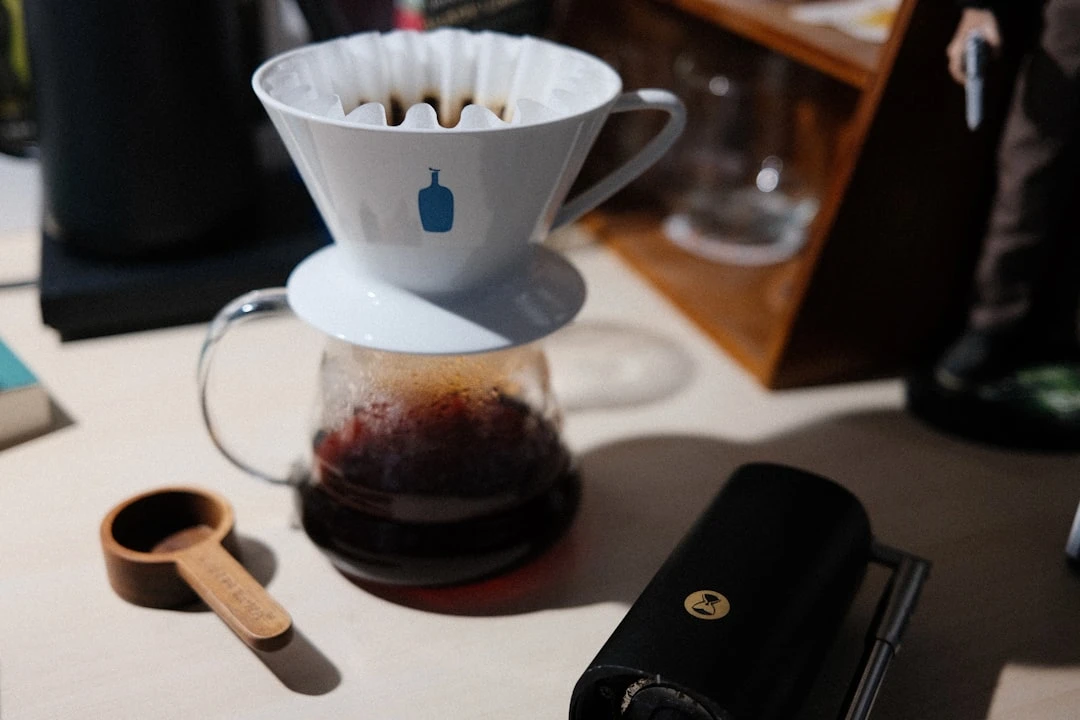The Ultimate Guide to Cold Brew Grind Size: Why Your Coffee Tastes Wrong
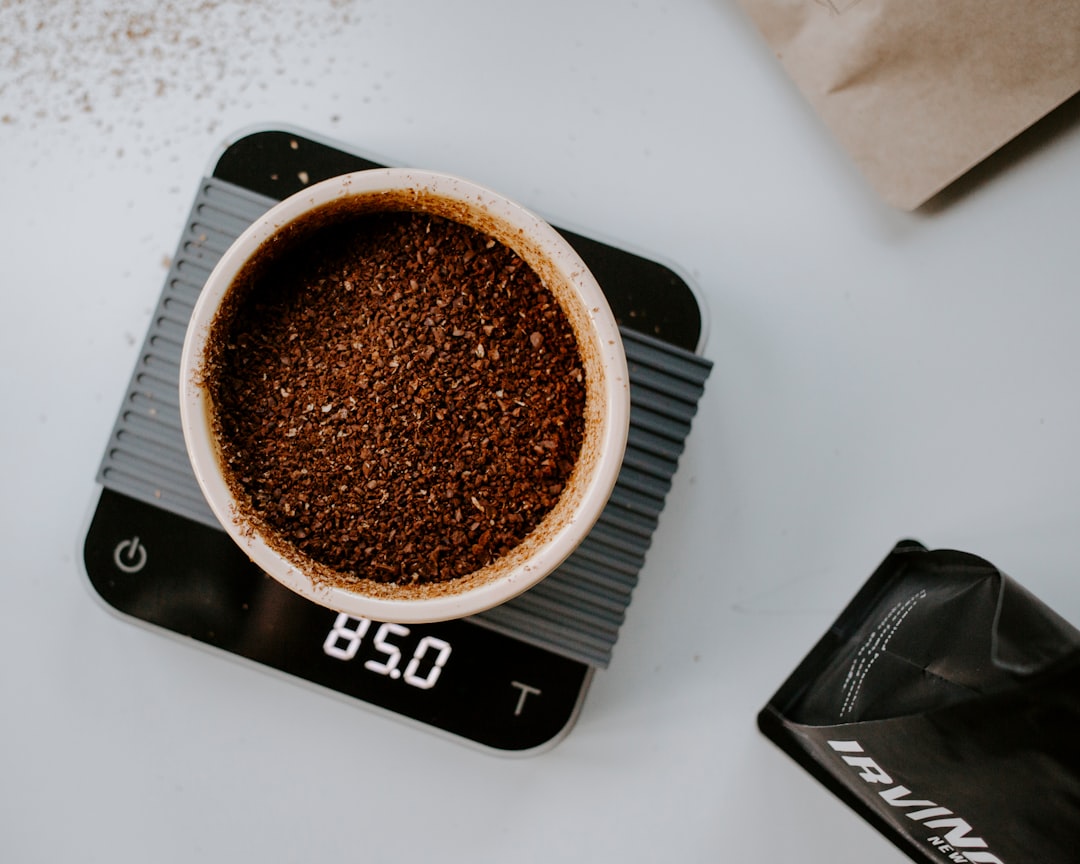
Here's a stat that blew my mind: cold brew sales have increased by over 580% in the past decade, yet 90% of home cold brew attempts taste like disappointment in a glass. I know this because I was part of that 90% for way too long!
Let me paint you a picture. Three summers ago, I was determined to master cold brew after spending ridiculous amounts at coffee shops. Armed with confidence and a bag of pre-ground coffee, I mixed everything together and waited 24 hours. The result? Something that tasted like it belonged in a science lab, not my kitchen. Bitter, harsh, and honestly kind of gross.
The game-changer wasn't the beans, the water, or even the brewing time. It was the grind size. Such a simple thing, but it's literally the difference between coffee shop quality cold brew and whatever disaster I was creating in my kitchen.
Cold brew isn't just regular coffee made cold - it's a completely different brewing method that requires its own rules. And rule number one? Your grind size needs to be spot-on, or everything else falls apart. Trust me, I learned this the hard way so you don't have to!
Why Cold Brew Grind Size Actually Matters More Than You Think
Okay, let's get a bit nerdy for a second because understanding this will save you from so many headaches. Cold brew works through immersion brewing, which basically means your coffee grounds are hanging out in water for hours, slowly releasing flavors. It's not like pour-over where hot water rushes through grounds in minutes.
I remember my first attempt at cold brew - I used medium grind coffee because that's what I had lying around. After 12 hours of steeping, I took a sip and immediately made a face my wife still teases me about. It was bitter, harsh, and had this weird chalky aftertaste that lingered forever.
Here's what I didn't understand then: when your grind is too fine, you're essentially over-extracting your coffee. Those tiny particles release their flavors too quickly and too intensely during the long steeping process. It's like the difference between a gentle massage and someone poking you repeatedly - same contact, totally different experience.
The science behind it is actually pretty cool. Coarser grinds have less surface area exposed to water, which means extraction happens slower and more evenly. Fine grinds have tons of surface area, so they dump all their flavors (including the bitter compounds you don't want) into your cold brew way too fast. Nobody wants that!
The Perfect Cold Brew Grind Size
Alright, here's the money shot - your cold brew grind should look like coarse sea salt or breadcrumbs. If you're thinking "that seems really chunky," you're absolutely right, and that's exactly the point!
I spent months tweaking this, and the sweet spot is what coffee nerds call "extra coarse." Think bigger than what you'd use for French press, which is already pretty coarse. When I hold the grounds in my hand, individual pieces are clearly visible, and there's barely any fine powder at the bottom of the grinder.
Here's a visual trick that saved me: good cold brew grind should remind you of kosher salt, not table salt. If your grounds look like sand or, heaven forbid, flour, you've gone way too fine. I actually keep a small container of coarse sea salt in my coffee area as a reference point because I'm apparently that obsessive about my cold brew now.
The crazy part? When I finally got the grind right, the difference was immediate. My cold brew went from harsh and bitter to smooth and naturally sweet. I literally couldn't believe the same beans could taste so different just by changing how I ground them.
One mistake I see people make constantly is thinking coarser means weaker coffee. Nope! You'll actually extract more of the good flavors and less of the harsh ones. It's counterintuitive, but trust the process. Your taste buds will thank you.
Common Cold Brew Grind Size Mistakes I've Made
Let me share some of my most spectacular cold brew failures, because apparently I needed to make every possible mistake before figuring things out.
Mistake number one: using pre-ground coffee from the grocery store. I thought I was being smart by saving time, but pre-ground coffee is almost always too fine for cold brew. Plus, it's been sitting around losing flavor for who knows how long. The result was this weird, flat-tasting cold brew that had all the excitement of drinking brown water.
Then there was the time I decided to use my regular drip coffee grind setting. Big mistake! After 18 hours of steeping, I had created what can only be described as coffee mud. The liquid was cloudy, over-extracted, and so bitter I actually spit it out. My wife found me staring sadly into the pitcher, probably wondering why I was torturing myself with bad coffee when perfectly good coffee shops existed.
But here's the mistake that really got me: inconsistent grinding. I was using a cheap blade grinder that created this mix of chunky pieces and fine powder. The fine bits over-extracted while the big chunks barely contributed any flavor. It was like having a cold brew identity crisis in every sip - some parts smooth, some parts harsh, all parts confusing.
The worst part about inconsistent grinding is that you can't troubleshoot it properly. One batch might taste decent by accident, then the next batch with the exact same process tastes terrible. I spent weeks thinking I was losing my mind before I realized my grinder was the problem, not my technique.
How to Achieve the Perfect Grind at Home
Okay, let's talk equipment because this is where I initially went wrong and probably where you're struggling too. The truth is, you don't need to spend $500 on a grinder to make great cold brew, but you do need to be smart about your choices.
First up: burr grinders vs blade grinders. I know, I know - burr grinders cost more, but hear me out. Blade grinders basically attack your coffee beans with spinning blades, creating an inconsistent mess of particle sizes. Burr grinders crush beans between two surfaces, giving you uniform pieces every single time.
I used a blade grinder for way too long, thinking it didn't matter that much. Wrong! When I finally upgraded to a decent burr grinder (got mine for about $80 on sale), the difference was immediate. Consistent grind means consistent extraction means consistently good cold brew.
If you're on a tight budget, here's what I learned: hand grinders can actually work really well for cold brew. Since you're not grinding every morning for hot coffee, the extra time doesn't matter as much. I have a hand grinder that cost $35 and produces more consistent results than my old $50 blade grinder ever did.
Here's a pro tip I wish someone had told me earlier: when using a burr grinder for cold brew, start with the coarsest setting and work your way finer if needed. Most people (including past me) start in the middle and wonder why their cold brew tastes off. Go coarse first, taste, then adjust.
Testing Different Grind Sizes
I'm a bit of a coffee nerd, so naturally I decided to run a completely unnecessary but totally fascinating experiment. For 30 days, I made cold brew with different grind sizes using the exact same beans, water, and steeping time. My poor wife had to taste-test everything with me.
Week one was fine grind - basically what you'd use for drip coffee. Results: harsh, bitter, over-extracted mess. Even after just 8 hours of steeping, it was already too strong and unpleasant. By 12 hours, it was undrinkable. This confirmed what I suspected - fine grind is terrible for cold brew.
Week two was medium grind, similar to what you'd use for pour-over. Better than fine, but still not great. The cold brew was drinkable but had this sharp edge that never quite smoothed out. It wasn't offensive, just kind of meh. Definitely not something I'd choose over buying cold brew at a coffee shop.
Week three was coarse grind - French press territory. Now we were getting somewhere! The cold brew was smoother, more balanced, and actually enjoyable to drink. But I had a feeling we could go even coarser.
Week four was extra coarse - chunks that looked almost too big to work. This was the winner! Smooth, naturally sweet, and complex enough to keep me interested sip after sip. The long steeping time allowed for perfect extraction without any harsh notes.
The surprising discovery was that the extra coarse grind actually produced stronger cold brew than the finer grinds, even though logic suggests it should be weaker. Turns out, better extraction doesn't mean more extraction - it means better extraction.
Troubleshooting Your Cold Brew Grind Size Problems
Let me help you diagnose what's going wrong with your cold brew, because I've probably made the same mistakes and figured out the fixes.
If your cold brew tastes bitter or harsh, your grind is almost definitely too fine. This was my problem for months! The solution is simple but requires patience - go coarser with your next batch. I know it feels wrong to use bigger chunks, but trust the process. Fine particles over-extract during long steeping times, pulling out compounds that taste terrible.
On the flip side, if your cold brew tastes weak or watery, you might be going too coarse. This is less common, but it happens. The fix could be grinding slightly finer, or just using more coffee grounds with your current grind size. Sometimes the grind is right, but the ratio is off.
Cloudy cold brew usually means your grind is inconsistent or you have too many fine particles mixed in with larger ones. If you're using a blade grinder, this is probably your issue. The fine particles slip through most filters and make your cold brew look muddy. Upgrade your grinder or try filtering through a finer mesh.
Here's a weird one I discovered by accident: if your cold brew tastes different every time you make it, your grinder might be inconsistent. I thought I was going crazy until I realized my cheap burr grinder wasn't actually creating uniform particles. Sometimes I'd get lucky and hit the right grind, other times it was off. Consistency is key!
One last troubleshooting tip - if your cold brew tastes flat or boring, try grinding slightly finer or steeping longer before assuming you need different beans. Sometimes the extraction just needs a little push to bring out those complex flavors that make cold brew special.
Conclusion
Here's the thing about cold brew grind size - it's probably the most important factor that nobody talks about enough. I spent way too much time and money trying different beans, ratios, and steeping times before realizing that my grind size was sabotaging everything from the start.
The perfect cold brew grind is coarser than you think, more important than you realize, and easier to achieve than you might expect. Whether you invest in a decent burr grinder or make do with a hand grinder, consistency is what matters most. Those chunky, sea salt-sized pieces might look wrong, but they're the secret to smooth, flavorful cold brew that actually tastes like it came from a good coffee shop.
Remember, everyone's taste preferences are different, so use my guidelines as a starting point but don't be afraid to experiment. Maybe you prefer your cold brew slightly stronger or milder than I do. The beauty of making cold brew at home is that you can customize it exactly to your liking.
Most importantly, be patient with the process. Cold brew is forgiving in many ways, but it does require some trial and error to get right. Don't get discouraged if your first few batches aren't perfect - I went through probably 20 pounds of coffee beans figuring this stuff out!
Related Articles
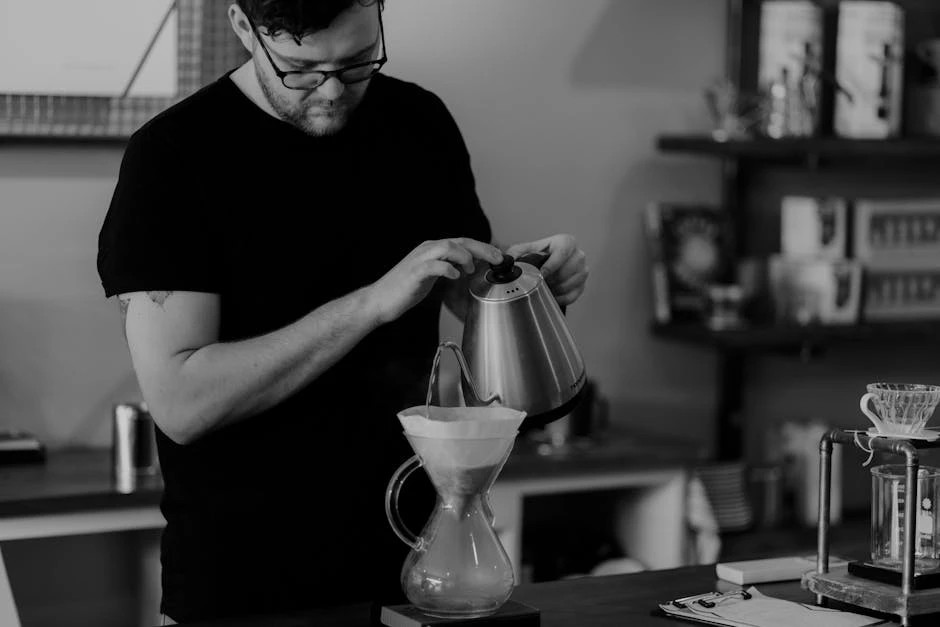
Coffee-to-Water Ratios & Grind Sizes by Brew Method
Read More →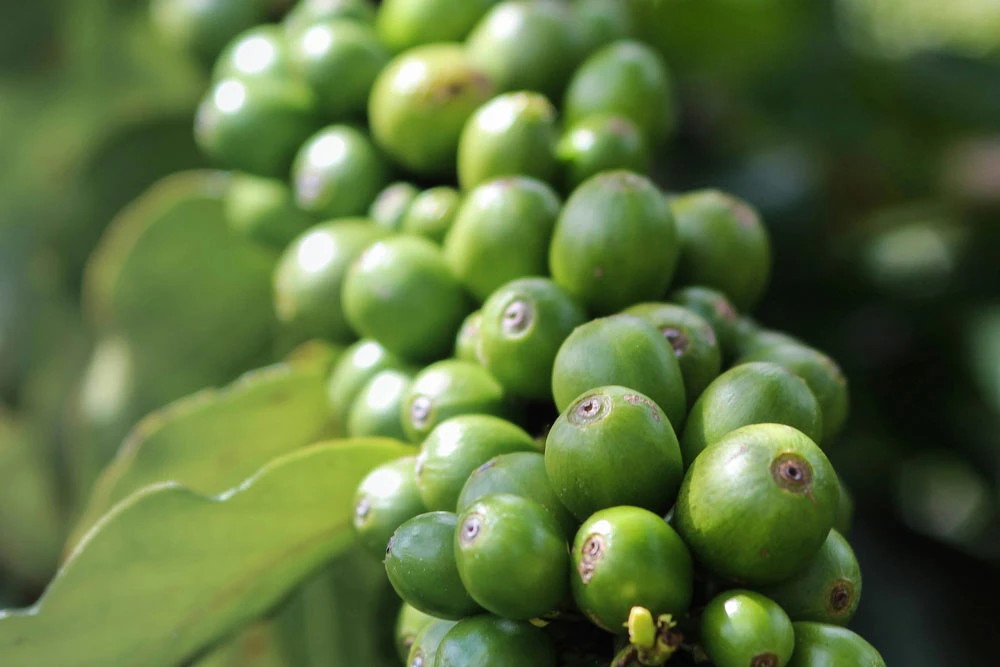
The Story Behind Your Coffee Beans
Read More →